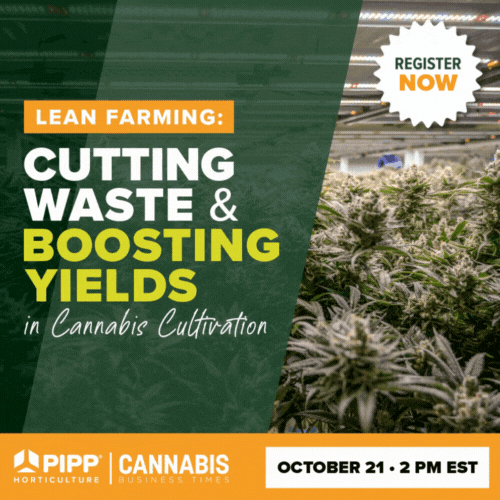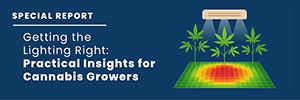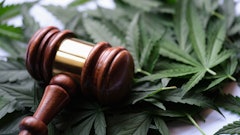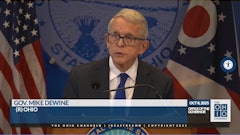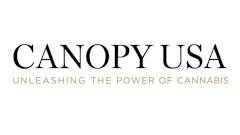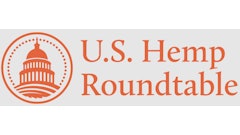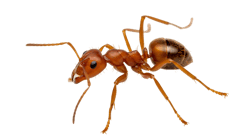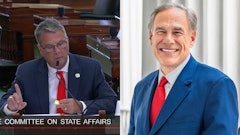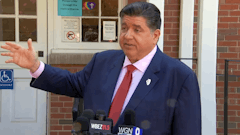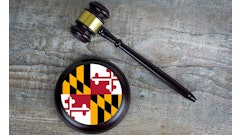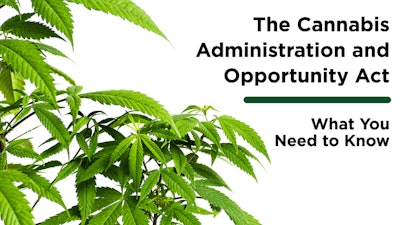
U.S. Senators recently proposed legislation called the Cannabis Administration and Opportunity Act (CAOA) to legalize cannabis on a federal level. But industry representatives say language in the new proposed bill could have major influence on the hemp industry as well.
Last month, U.S. Senate Majority Leader Chuck Schumer, D-N.Y., Senate Finance Committee Chairman Ron Wyden, D-Ore., and Sen. Cory Booker, D-N.J., released a preliminary draft of a federal cannabis legalization bill.
However, the CAOA also makes multiple references to hemp and hemp-derived products—and raises questions regarding them, said Rick Fox, co-chair of the National Industrial Hemp Council’s (NIHC) Government Relations committee and CEO and co-founder at Vermont-based Meristem Farms.
For example, the proposed bill sponsors encourage separate federal agencies to regulate hemp and cannabis. They also support cannabidiol’s (CBD) designation as a supplement with recommended serving limits.
The Senate sponsors’ offices are requesting public comment by Sept. 1. Soliciting feedback isn’t required of the legislative branch but is of executive agencies, Fox said, adding, “They really are going above and beyond what is required of them to try to wrap their heads around this.”
Hemp THC Limits
Cannabis exceeding 0.3% delta-9 tetrahydrocannabinol (THC) would be removed from the Controlled Substances Act under the CAOA. That leaves the question of if “hemp” should be redefined, said Fox, who produces CBD-dominant hemp flower products, or “resin hemp,” at Meristem Farms, which has locations in Vermont, Michigan and California.
The Agriculture Improvement Act of 2018 (the 2018 Farm Bill) defined hemp as Cannabis sativa not exceeding 0.3% delta-9 THC with no mention of limits on other intoxicating THC isomers such as delta-8 THC. The USDA’s final rule on hemp further defines hemp by its “total THC” content, which also accounts for decarboxylated tetrahydrocannabinolic acid (THCA) that has been converted into delta-9 THC. Further, the final rule states: “Delta-8 THC is unrelated to the 0.3 percent delta-9 THC limit or the ‘post-decarboxylation delta-9 THC’ that are defined and required in this rule.”
“Obviously, there's a lot of attention in the industry these days on other cannabinoids besides delta-9, like delta-8,” Fox said. “So, should the federal definition of hemp be changed to dovetail better with what's being done in this bill? Should it include all tetrahydrocannabinols, and set the threshold at 1%, for example—which is what the National Association of State Departments of Agriculture recommended, ... voting to approve the recommendation in February?”
NIHC, too, supports increasing the THC limit of hemp from 0.3% to 1%. “We’ve been pushing for this from the beginning because it’s better for farmers,” Fox said. “Many of the varieties are easily over 0.3 but not over 1%. It benefits farmers financially because the CBD content of hemp is directly correlated to the total amount of THC in the plant. When you limit [THC] to 0.3, you’re essentially limiting CBD yields as well.”
Fox points out that Dr. Ernest Small, Ph.D., a researcher whose work with cannabis in the 1970s influenced the establishment of the U.S.’ 0.3% hemp THC limit, has more recently said a 1% limit is more reasonable.
“The Committee is concerned that the level of allowable THC content in hemp may be arbitrary and pose a burden on hemp producers that is not supported by scientific evidence. The Committee directs USDA to work with the Department of Health and Human Services and the Drug Enforcement Administration to study and report to Congress on whether there is scientific basis for the current limit of [0.3] percent THC in hemp and suggest alternative levels if necessary."
Taxes and Permits
The CAOA would require cannabis product wholesalers to obtain a permit from the U.S. Treasury Department’s Alcohol and Tobacco Tax and Trade Bureau (TTB), while the USDA would retain regulatory control over hemp production.
“I don't know that TTB spends much time on farms, or dealing with farmers at all,” Fox said. “I think we should be looking at how wine grapes, grains for distilling [alcohol] and tobacco leaf is regulated, before and after the farm, and see if there might be a better approach here.”
The CAOA proposal also includes an excise tax on cannabis, graduating from 10% for the first calendar year of bill enactment and the following year, to 15% in the third year of enactment, 20% in the fourth year and 25% in the fifth year. As currently written, this tax would not apply to hemp, which falls under a separate definition.
Fox said he believes that hemp should not be taxed the same as cannabis. “We all want to make sure that … resin hemp can be accessible through retail in ways that are not as limited as high THC,” he said.
CBD in Food and Supplements
The CAOA would also help create a legal route for CBD’s inclusion in dietary supplements, removing “the prohibition on marketing CBD as a dietary supplement” and requiring “certain dietary supplements … submit New Dietary Ingredient (NDI) notifications to FDA,” according to the CAOA Discussion Draft.
However, Fox said CBD couldn’t be legally allowed in food under the current CAOA language. “This proposal actually carries forward a House bill that would designate hemp-derived CBD as a supplement, but only as a supplement,” Fox said. “There’s a Senate bill that would effectively allow all hemp products, including CBD, into supplements and food, and there’s a lot of reasons why that approach would be better. We will certainly be mentioning that to the sponsoring offices here.”
NIHCS spokesperson Larry Farnsworth told Hemp Grower that not allowing CBD in food would cause disruptions in the market, as many farmers produce CBD destined for food products.
Citing statistics gathered from NIHC economists, Farnsworth said, "In the U.S., 45% of all hemp is grown for CBD; 45% of it is used for food, 40% for cosmetics and 15% for supplements.”
The CAOA states that CBD supplement producers would be required to manufacture supplements that adhere to to-be-determined daily serving limits.
Fox said he believes supplement serving sizes should be clearly marked so that consumers know how much they are consuming. However, NIHC doesn’t have a formal stance on maximum daily values, as more research on CBD dosages is needed.
Some botanical-derived supplements have serving sizes with an asterisk that says a maximum daily value hasn’t been established, as they can affect different consumers differently, Fox said.
“I think there are many stakeholders who would say that the same logic [could apply] to CBD and hemp, if not cannabis writ large,” Fox said, offering his personal opinion. “But the political reality is, people have concerns, so if [having maximum daily values] helps them get over concerns, then so be it.”
Speaking about CAOA more broadly, Fox said NIHC is pleased with the sponsors’ willingness to obtain and respond to feedback from the hemp and cannabis industries, adding, “We’re all cheers—not on the proposal, but on how the sponsoring offices are handling the outreach and soliciting input."

